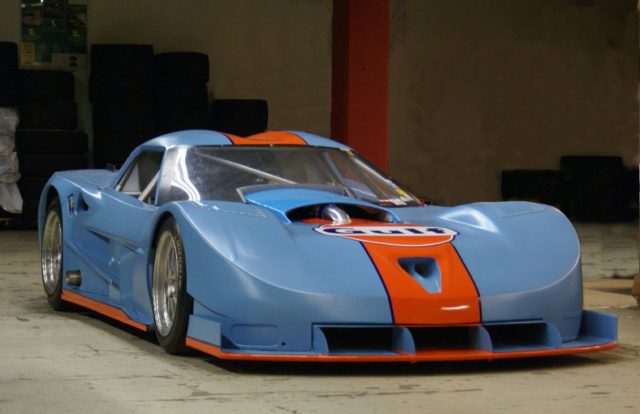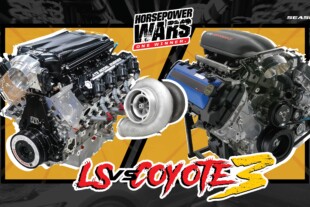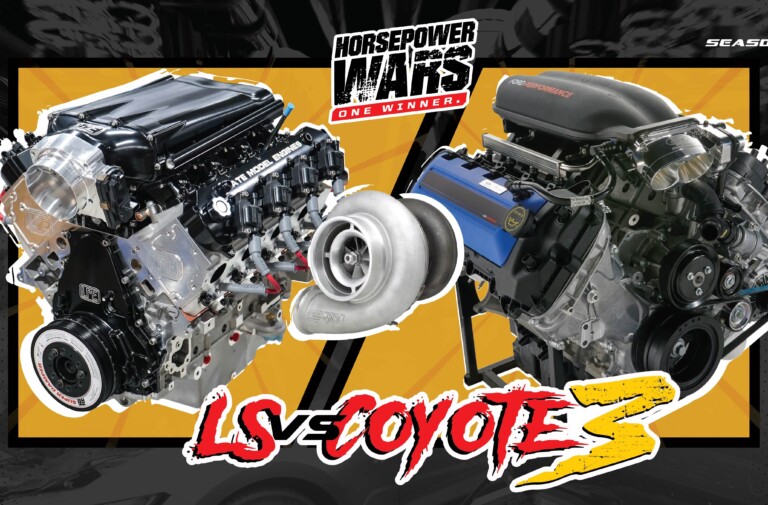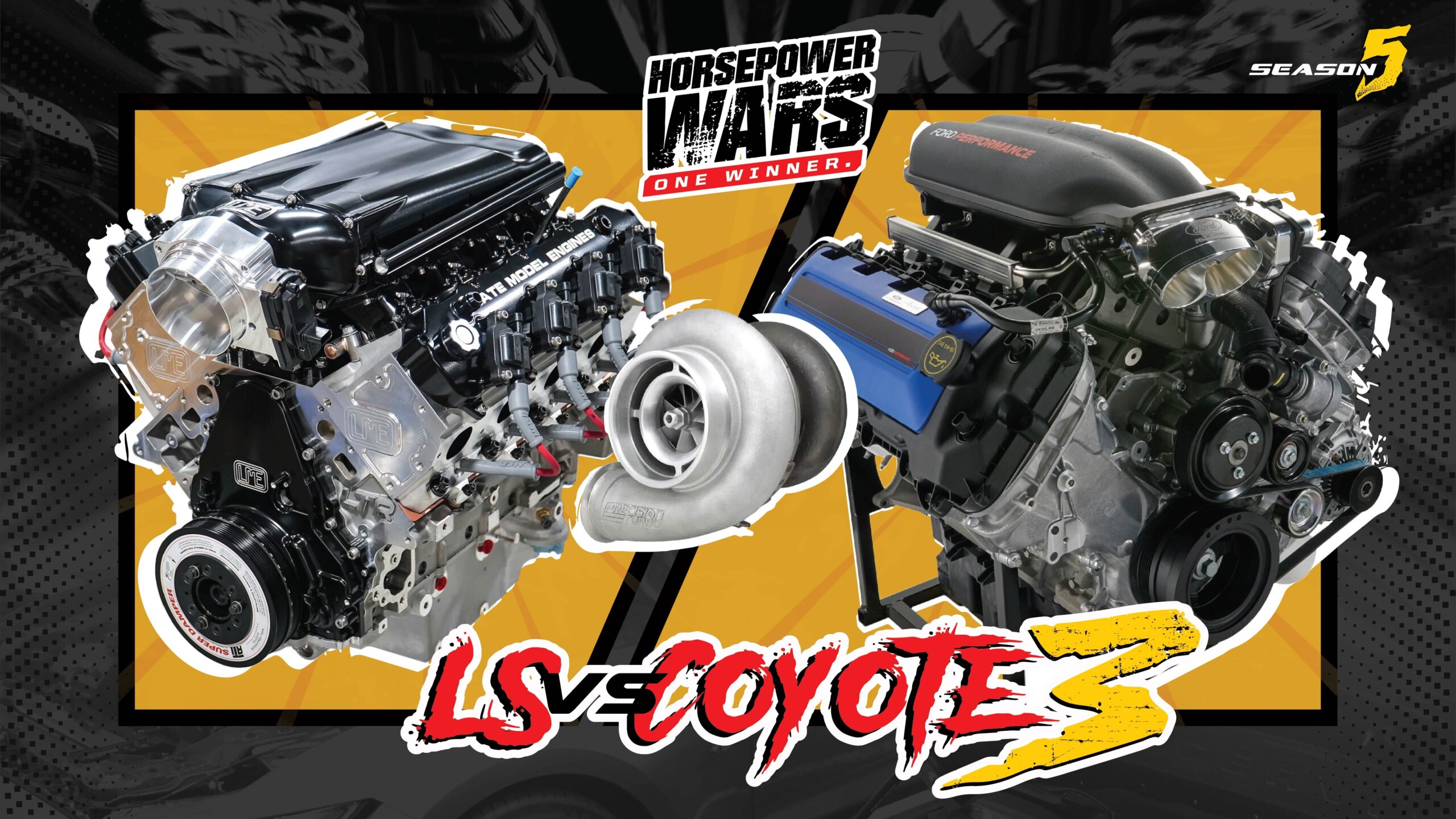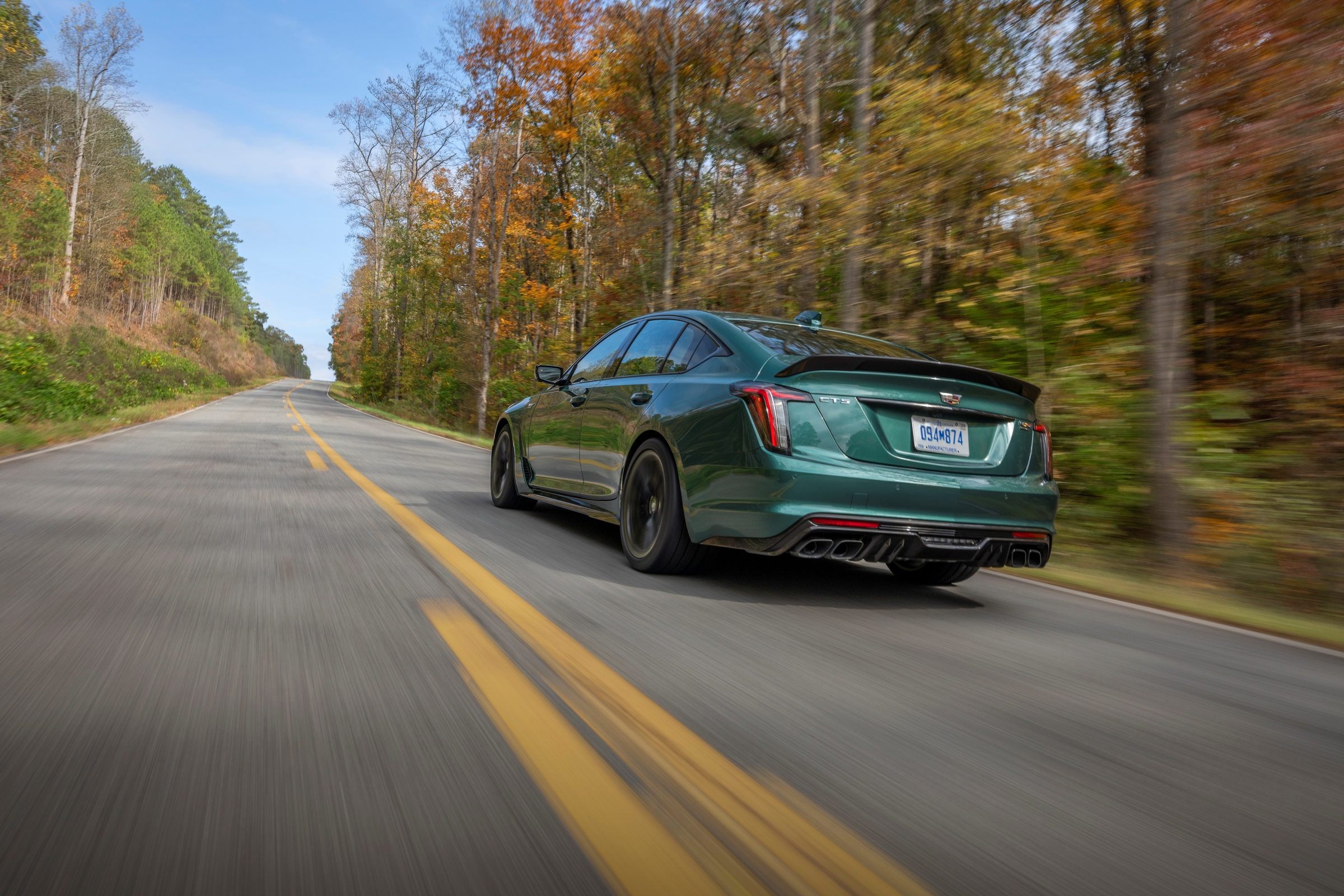Though it looks vaguely like a Corvette from the outside, it is, in fact, more tubing than it is Chevrolet. But it is unmistakably fast—powered by a 358ci small block Chevy offset slightly to the driver’s right for improved weight distribution, Speedlab’s silhouette racer is optimized for the circuit in every conceivable way.
The engine is mounted very far back, and is, in fact, in line with the lowest point of the gearbox. The SBC, force-fed by two turbochargers, makes 1,000 horsepower comfortably at 14 pounds of boost, and uses 4 wastegates in total. This is because the turbochargers have dual inputs in order to get longer time between exhaust pulses in each input.
Despite the immense amount of heat in the engine bay, they don’t run an intercooler to save weight and allow crucial airflow over the exhaust, which is shrouded to prevent water from the road making contact. Instead, the engine uses an alcohol-water injection to remain cool.
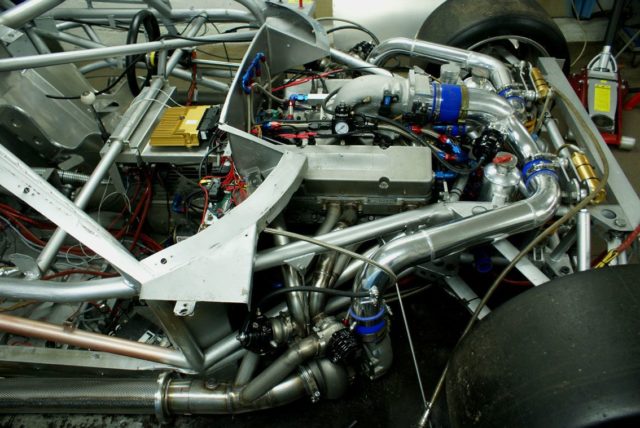
Despite the turbochargers, they’ve opted to run the SBC without intercoolers for better weight distribution and improved airflow. Photo credit: corvetteforums.com
With all the tubing to provide custom front and rear ends, Speedlab mounted the motor entirely behind the front wheels for a 46-54% front-rear weight distribution. The pushrod suspension uses custom Ohlins coilivers, and the AP Racing brakes, with the aid of slicks measuring 13″ wide in front and 14″ in the rear, mean incredible stopping forces. It only gets better at speed, too—and the A-arms and uprights are designed for immense levels of downforce—which is a large part of what makes this car such a monster.
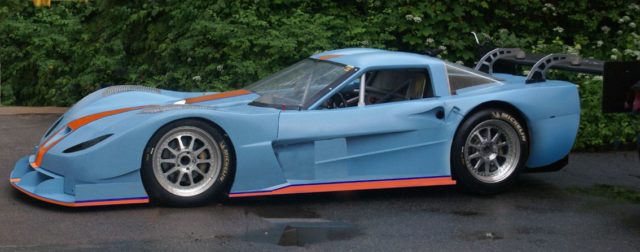
Decked out in Gulf livery, this silhouette ‘Vette has a custom front styled after a falling drop of water. Photo credit: corvetteforums.com
Not only does a front diffuser exit from behind the front wheels, but that massive rear diffuser, coupled with the a rear wing which could double as a picnic table for a large family, make this a very sticky thing at speed. The rear wing uses “swan neck” style mounts, punched full of holes filled with balsa wood, for reduced weight and turbulence. All together, the aero elements make 1,700 pounds of downforce distributed evenly over both axles.
In fact, because of the immense loading on the wheels and tires, Speedlab went through a few sets of rubber, and suffered one disastrous wheel failure that could’ve ended in tears. Fortunately, the car was able to ground itself before hitting the wall, but it pushed Speedlab to contacting a Swedish company known for manufacturing wheels used for NASCAR and rested easy.
With an aluminum motor in place, the pared-down racer weighs an astonishing 2,200 pounds—and that clearly shows in how nervous it is. Not only must driver Erik Blixt use subtle steering inputs to not over-drive the sensitive Corvette, but he has to tread carefully on the throttle to avoid spinning the 14″ slicks down half the front straightaway. Though it’s agile and responsive, there’s still an element of absurdity and real muscle lurking beneath the gleaming Gulf livery.



